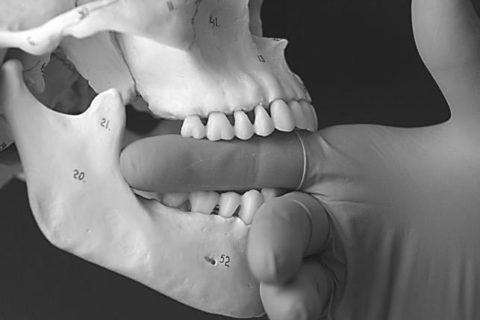Jaw Pain and Dysfunction The jaw (or TMJ for Temporo Mandibular Joint) is frequently unacknowledged as a source of pain in many head, neck, face, and vocal conditions. People who experience headaches, motor vehicle accidents, sport or work site injuries, often have jaw issues that can accumulate to overwhelming levels. Clenching the teeth is a very common habit during sleep, while concentrating, or from stress. This often results in an accumulation of both compressive forces in the joints and asymmetrical muscle tightness which can lead to clicking, pain and ultimately joint damage. Resolving the joint compression and muscular tightness can re-pattern the jaw mechanics and save pain and difficulties decades later
TMJ Dysfunction – Temporo Mandibular Joint

TMJ Dysfunction – Temporo Mandibular Joint
The jaw (or TMJ for Temporo Mandibular Joint) is frequently unacknowledged as a source of pain in many head, neck, face, and vocal conditions. People who expe
TMJ Dysfunction – Temporo Mandibular Joint

Treatment involves working directly on the chewing muscles.
Accessing the chewing muscles involves working inside the mouth for 20 to 30 seconds at a time, alternating between right and left sides. Releasing muscle tightness and joint compression fosters mechanical symmetry, addresses pain, and can contribute to improving your bite.
Why do some jaw joints click?
This screening test can measure 38 essential minerals and toxic metals. Minerals screened include electrolytes- calcium, magnesium, sodium, potassium, and phosphorous and trace minerals- copper, manganese, chromium, selenium, iron, molybdenum, lithium, cobalt, and zinc. Toxic metal screening includes lead, mercury, cadmium, arsenic, nickel, aluminum and more.
This information will provide the basis for a balancing protocol from your practitioner. Many physical and behavioural health conditions can be prevented or reversed by correcting tissue mineral levels and ratios with proper diet, supplementary nutrients and lifestyle modifications.
Connecting the dots...
- Assessment begins with looking at the symmetry of mouth opening and closing, and habits of clenching and or grinding. The health and function of the sinuses, ears, cranial bones, speech and breathing patterns, as well as dental history will all be considered. Pain is often reduced when the tightness in the chewing muscles is diminished or resolved.
- TMJ pain and dysfunction frequently involves and vicious cycle comprised of many primary and secondary components. The goal is to identify and separate the componets so that they are no longer influencing each other.
- TMJ pain and dysfunction may be secondary to other conditions.
What to expect:
- A series of 3 to 8 weekly treatments is often required in an attempt to re-pattern the TMJ Dysfunction (TMJD), and/or laryngeal position. Treatment goals and criteria for detecting progress will be established so you may measure effectiveness.
- Longstanding issues can frequently be improved but not fully resolved. In these cases clients “graduate” after an initial series to monthly or seasonal visits of 2 treatments within a week to keep old patterns from recurring; feeling well for longer is the intent.




